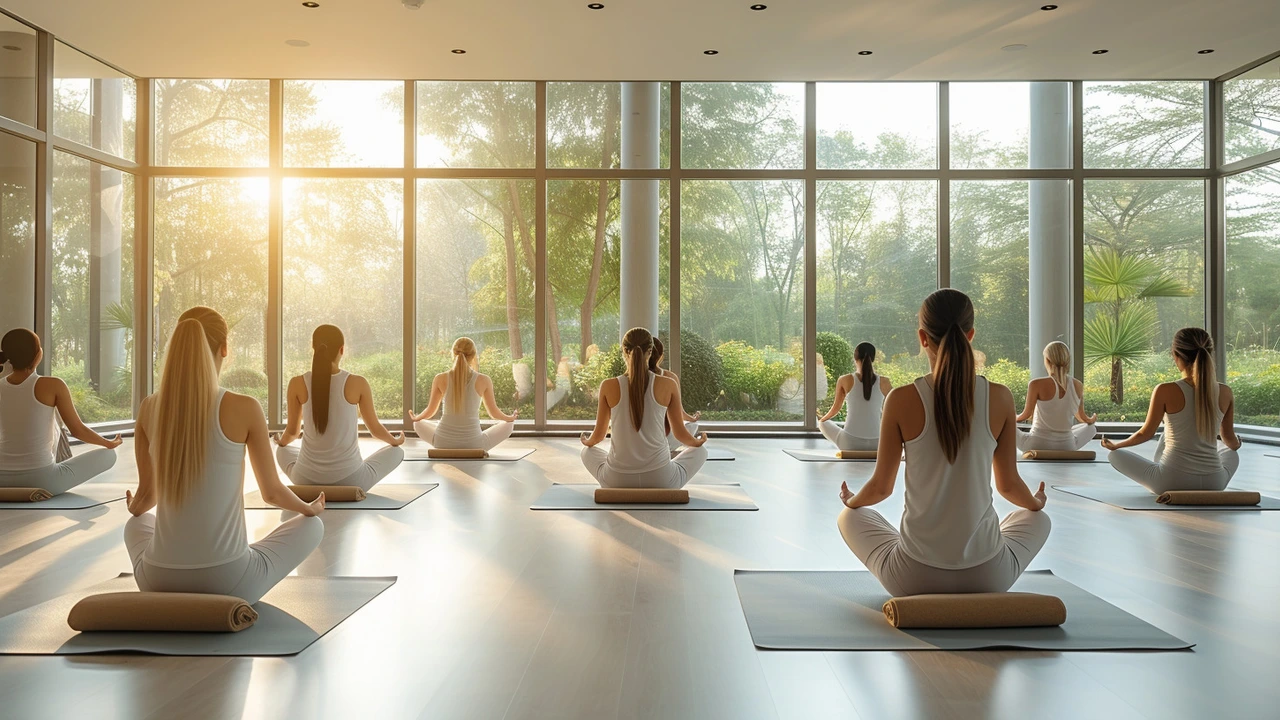Science of Stretching: How to Get Flexible Without Hype
Stretching works by changing how your muscles, tendons and nervous system respond to length and load. You can get faster results if you focus on three things: type, timing and consistency. Here are practical, science-backed steps you can use today.
Dynamic stretches use movement to prepare joints and raise muscle temperature — great before workouts. Examples: leg swings, arm circles, hip openers. Static stretching holds a position and lowers passive tension — best after exercise or in dedicated mobility sessions.
Your nervous system limits how far you comfortably move to protect tissues. PNF methods (contract-relax) tap into that reflex to reset range quickly when used correctly.
Fascia and tendons respond slower than muscle; they need repeated loading and time to adapt. Short daily sessions beat rare hour-long attempts.
For flexibility, hold static stretches for 30 to 90 seconds per area, or use several short 10 to 20 second holds if you prefer. With PNF try a 6 to 10 second gentle contract, then 20 to 30 seconds relaxed stretch.
Breathe steady and avoid sharp pain — stretching should feel like strong pressure plus a clear easing over time.
Train mobility like strength: load progressively, track what improves, and repeat regularly. Two to five focused sessions weekly move most people forward; athletes may need more targeted daily work.
Sample quick routine: 1) five minutes dynamic warm-up, 2) two mobility drills per joint for two minutes each, 3) two static holds for tight spots, 30 to 60 seconds. If you have stiff joints or recent injuries, work with a therapist and progress slowly.
Combine stretching with massage, foam rolling or somatic practices like Feldenkrais to change movement patterns, not just length.
Use gentle stretching for chronic tightness, but avoid aggressive pushing on inflamed tendons — follow pain signals and talk to a clinician if unsure.
Track progress with simple tests: how far your hand reaches on a sit-and-reach, single-leg balance time, or squat depth. You'll notice small changes faster than you expect if you keep it regular.
Quick How-To
Start with movement, then add targeted holds. Use breath and slow progress.
Common Mistakes
Rushing results, ignoring pain, and stretching only sometimes are the big traps. Stretching without strength can create unstable joints.
Pair mobility with strength work for lasting gains and fewer injuries.
Start small, track one measure, and give your tissues weeks not days to change.
If you sit a lot, open hips and chest daily. If you lift heavy, focus on thoracic mobility and hamstring strength. For runners, add ankle mobility and calf elasticity work.
Warm baths, light massage, and sleep help tissue adaptation. Use foam rolling before gentle stretching to find tight spots. Remember flexibility gains follow consistent effort and sensible load progression.
Weekly plan example: three days mobility (20 minutes), two days strength that includes end-range reps, and daily short stretch sessions after showers. Check progress in four weeks and adjust.
If pain persists, see a clinician before pushing further. Stay curious.

The Art and Science of Fascia Stretching
Hey there, in this post, I'm diving into the fine art and scientific approach of fascia stretching. We'll look at how this technique can improve flexibility, enhance muscle function, and contribute to overall wellbeing. Brace yourselves for a journey that blends aesthetics and physiology into a seamless health discipline. If you're curious about the ins and outs of fascia stretching, this piece is for you – the awesome science and elegant artistry of stretching await!
Categories
- Health and Wellness (148)
- Alternative Therapies (86)
- Massage Therapy (40)
- Travel and Culture (15)
- Beauty and Skincare (9)
- Holistic Health (8)
- Health and Fitness (5)
- Spirituality (5)
- Other (2)
- Personal Development (2)



